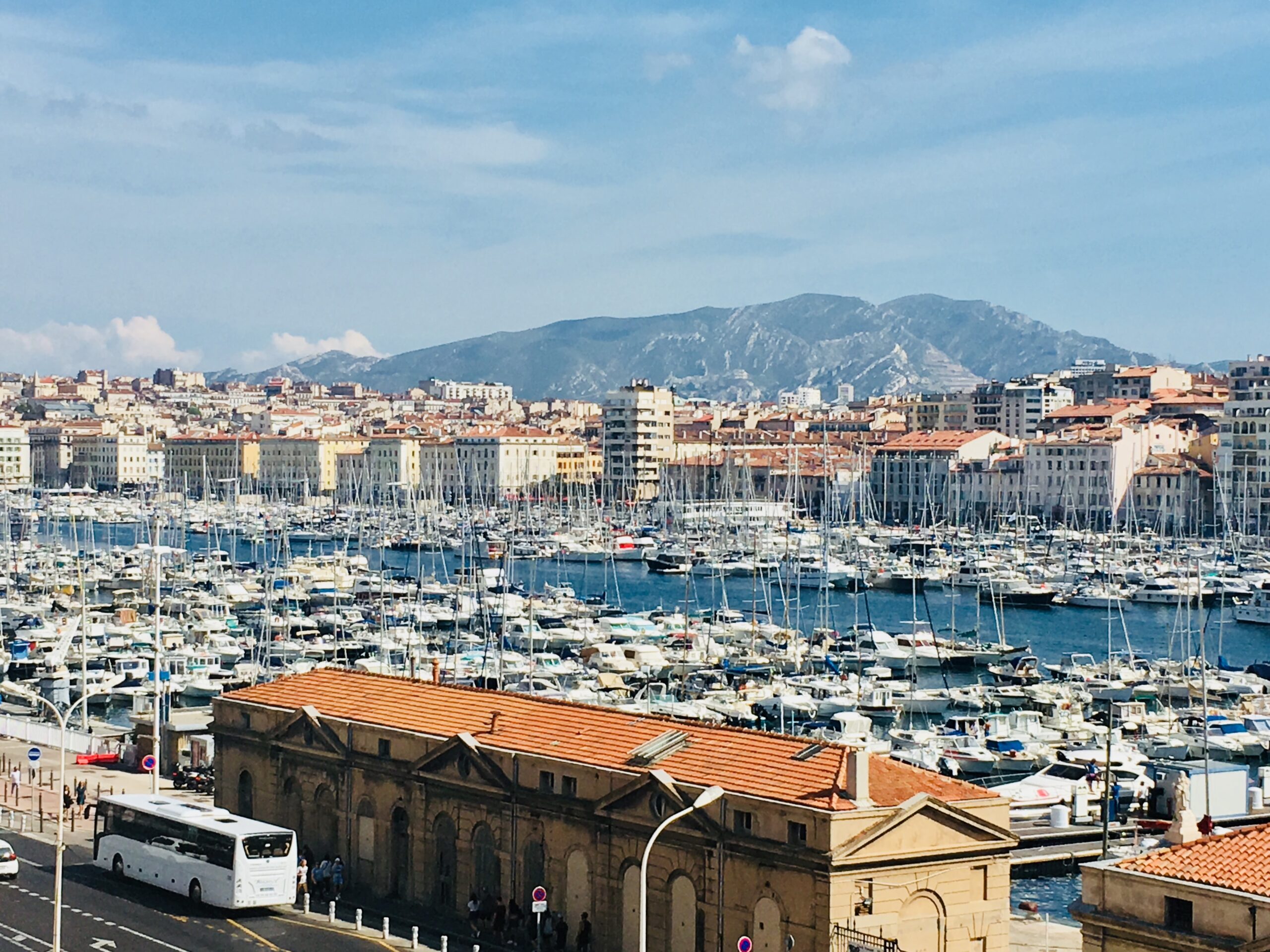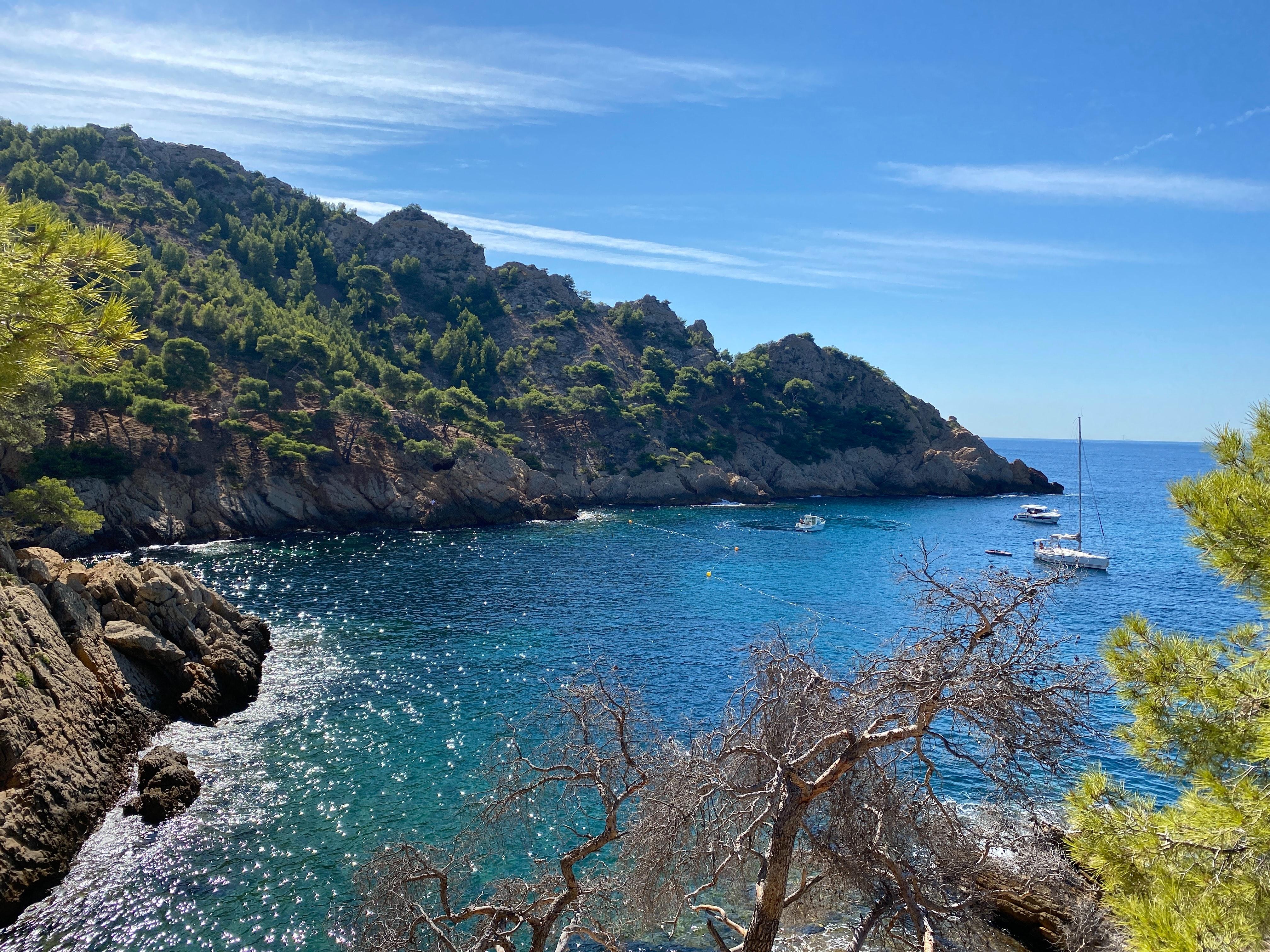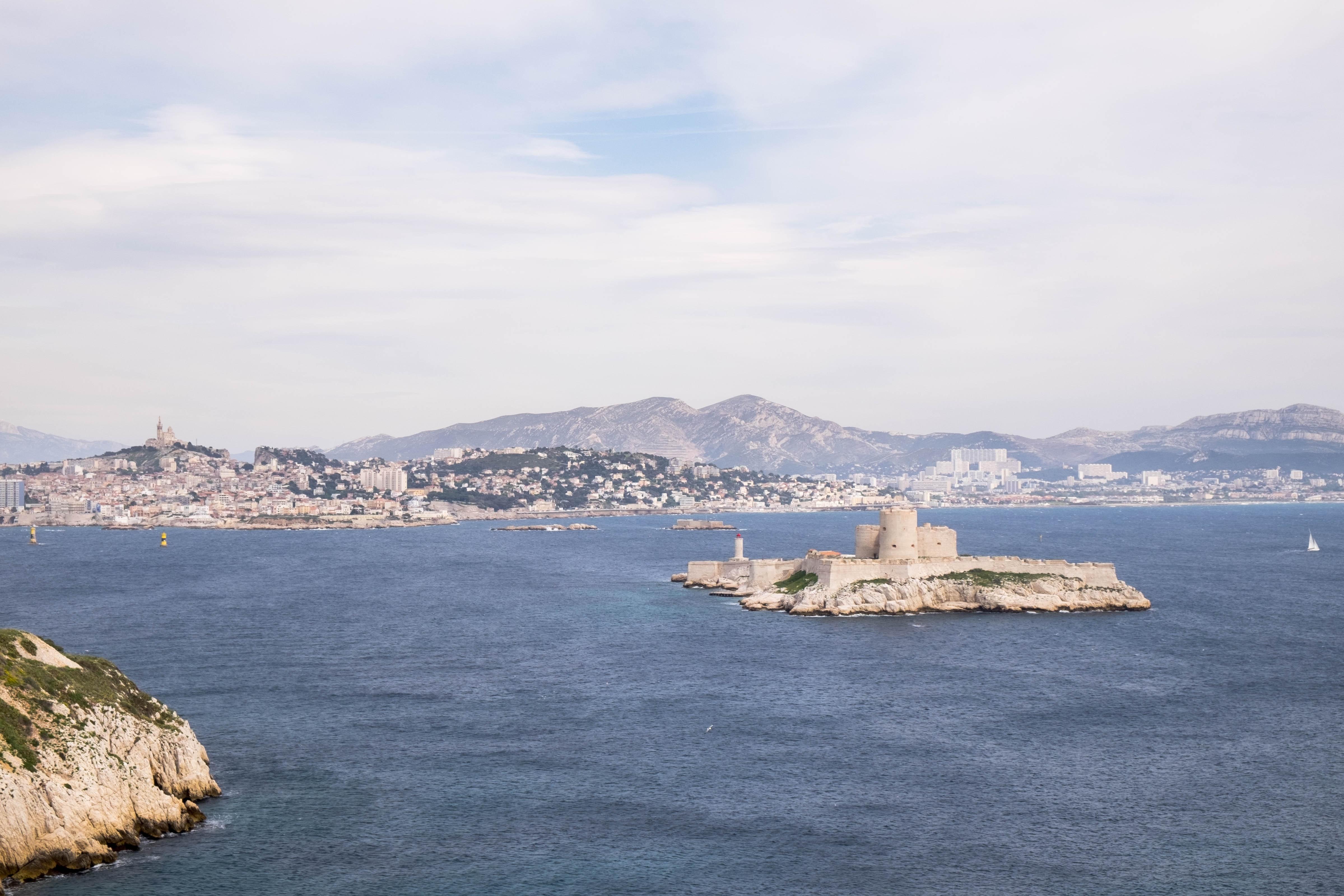
The Better of Marseille
Like many cities in the Mediterranean, the city of Marseille has a complicated past. The city is the second largest in France and one of the largest in Europe with a history dating back to 600 BC. BC. Reaches back. The city was founded as a Phoenician and then a Greek colony and is one of the most diverse cities in the Mediterranean due to the city’s large port area. After the Second World War, the population grew even faster with migrants from Italy, Spain and many of the then African colonies of France. However, if you think of Marseille as a sleepy village and Provencal clichés, you will be seriously mistaken.
Marseille is a city that, while baked in the Mediterranean sun, is bustling with life, boasting thriving markets and public areas for nature reserves, rugged cliffs, azure beaches, booming nightlife and amazingly delicious seafood. Check out some of the best spots in the city of Marseille and experience the true beauty of the South of France.
Explore the old port
The port of Marseille is one of the largest in the country and one of the largest in Europe. The massive rectangular port has been there for over 2,600 years and serves primarily as a trading and trading hub between the various city-states along the Mediterranean. The old port (the Vieux port) is still more of an independent district than just a landmark of the city.
The old port is also a central place for other tourists, especially in the summer months. The harbor is surrounded by three quays with wide promenades, where street musicians, shops, restaurants and cafes constantly live. Grab some pastis and enjoy the sunset or dine on some fresh seafood while enjoying the local music and scenery from the yachts and boats that ride into the docks. The 18th-century warehouses that line the quays give the area a distinctive flair that gives the area personality and makes you feel like you’re traveling back in time.
Hop on a boat and explore the Château d’If
The Frioul Islands are just a short ferry ride away. The island archipelago includes the islands of Pomègues, Ratonneau and Tiboulen. The Mediterranean water is blue and the sights are among the best as you can look out over the city from the water. The islands themselves have bays to discover, sandy beaches and a microclimate that is unique in the region allows rare and beautiful flowers, plants and trees to flourish.
Among the Frioul Islands is the legendary Château d’If. The “castle” was originally not built as a castle, but as a fortress to defend the city of Marseille. Although it was never used that way, it was turned into a prison. The notorious nature of the prison continues in the public consciousness to this day through Alexandre Dumas The Count of Monte Cristo in which the protagonist Edmund Dantes is convicted and then escapes from the Château d’If. The prison on the island bears a resemblance to Alcatraz and is a popular tourist attraction with a dungeon room dedicated to the character of Dante. Marc Twain visited the site before it was opened to the public, and the Château d’If is listed as an official historic monument by the French government.
Take a tour of the Basilique Notre-Dame de la Garde
The Basilique Notre-Dame de la Garde is the symbol of the city. While Paris has the Eiffel Cloth, Marseille has the Basilique Notre-Dame de la Garde. The Catholic Cathedral sits on a hill overlooking the city and is hard to ignore.
The cathedral is located on a hill and in the Middle Ages the place was used as an observation point. Then a smaller cathedral was built here, which was a popular pilgrimage destination for much of the Middle Ages. Finally, in 1853, they built the monolithic building that stands there today. While many legendary European cathedrals are centuries old and Marseille is definitely an old city, the Basilique Notre-Dame de la Garde is relatively young in comparison. The church is designed in a grand and opulent neo-Byzantine style using both light and dark marble and amazing gilded domes. The church remains an important place for pilgrims as well as sightseers and architecture lovers.
Visit the Basilique Notre-Dame de la Garde. The symbol of the city.
Explore the colorful streets of Le Panier
The colorful and eclectic Le Panier district is located above the old harbor on the hillside. Le Panier was translated as “basket” in English and has been around since 600 BC. The historic heart of Marseille when it was a Greek colony known as “Massalia”.
The neighborhood is known for its colorful buildings, winding cobblestone streets, and narrow streets. Once home to many newcomers to the country, the area has historically been a poorer residential area that often gave visitors a glimpse into local life without the overly clean and “manicured” areas devoted to tourism. While the area has been a bit embellished in recent years, Le Panier has tons of bustling boulevards filled with boutiques, quaint cafes, museums, and some of the best Algerian dishes in town. Le Panier also has some attractions that are worth visiting, such as the vielle Charité, La Canebiere and the Cathédral de la Major.
The old charity: Located on the Place des Moulin, the Vieille Charité is one of the most important landmarks of La Panier. The building was built in 1640 and built and financed by the city to provide shelter for the poor in the area under a royal decree aimed at curbing the homeless. The space became important to the city’s founding and charitable causes, and by 1749 a three-story public hospital along with a courtyard and chapel was added to the building. The facade of the Vieille Charité is more modern and features two stone engravings of pelicans feeding their young. This is supposed to represent the charity that takes care of poor children. Since 1986, La Vieille Charité has been a cultural institution that hosts events such as art galleries and ethnographic exhibitions.
La Canebière: Paris has The Champs Elysées and Marseille has La Canebière. The historic main street leads over a kilometer-long La Panier district from the port of Marseille to the Eglise St. Vincent de Paul. The avenue was built in 1666 on behalf of King Louis XIV to expand the city. The name “La Canebière” actually comes from the Latin word for “cannabis”, as the area around the old port was historically hemp fields, with Marseille being one of the world’s largest traders of hemp products such as ropes and baskets from the Middle Ages to the 1930s. The street was a haven for French high society with luxury hotels, cafes, boutiques and music halls. However, after the assassination of King Alexander I of Yugoslavia and the decline of the French Empire and its colonies, the road fell into disrepair. Now the street is back to its former glory and there are countless shops, boutiques and culture to discover.
Major’s Cathedral: In the northwest corner of Le Panier is the huge Cathédrale de la Major church. Located on an esplanade overlooking the waterfront, it was commissioned by Louis-Napoleon Bonaparte in 1852. It has two towering towers as well as a huge dome. The church was once the largest in France and is richly decorated with Italian marble and Venetian mosaics. Outside the cathedral is a popular square called “Les Voȗtes”, a popular meeting place with shops, restaurants and trendy landscapes.
Get a taste of local life in Noailles
The Noailles district is just east of the old port. While Le Panier is the historic working-class neighborhood that has since been gentrified, Noailles and La Plaine continue the communal traditions and marketplaces for immigrants. Noailles is one of the most diverse areas of Marseille and is home to many French-Algerian immigrants. The outdoor marketplace is like a trip to Africa with bustling bazaars filled with exotic spices, fresh fruits, vegetables and kebabs baking in the sun. You’ll also find stylish and affordable boutiques and cafes here that offer a fun cultural glimpse into the world of the locals.
Explore the Les Calanques National Park
The park of Les Calanques lies between Marseille and Cassis. “Les Calanques”, which means “the bays” in English, is a national park by the sea. Les Calanques is popular in the summer months and offers a bit of exploration for any adventurer. Biking and hiking trails along the coast and over the rugged and rugged cliffs offer breathtaking views and sights. If rock climbing is your thing, start at the base of the cliff and climb to the top. Kayaking and canoeing are also popular activities as the fjord-like bays of Les Calanques boast amazing turquoise waters and pools perfect for swimming.

Learn more about the history in the MuCEM
The Musée des Civilizations de l’Europe et de la Méditerranée, known for short as MuCEM, is both a huge and sprawling museum that covers Mediterranean civilizations in an oddly designed building. The museum was inaugurated in 2013. To gain access to this museum, guests must walk across a bridge as the museum is located on an island next to historic Fort St. Jean.
The museum offers a mix of exhibitions of art, photography, video, and historical artifacts, all of which provide an overview and a central theme of Mediterranean history. The museum also functions as an observation center and is attached to Fort St. Jean, which is another part of the MuCEM. The fort is a 12th century monument that played an important role during the Crusades.
Experience a game at the Stade Vélodrome
The Stade Vélodrome is home to the Olympique de Marseille and one of the best stadiums in Europe. The stadium has been the home of the soccer team since the 1930s and was renovated in 2016 just in time for the Euro tournament. Now the saddle-shaped stadium can hold up to 67,000 visitors and is a great place to play soccer or take a tour of the grounds, where you can learn more about the construction (including the undulating roof) and visit the player’s dressing rooms You can even take a walk on the pitch.
 Whether you love water sports, historic cities and buildings, or just relax, Marseille will enchant you.
Whether you love water sports, historic cities and buildings, or just relax, Marseille will enchant you.
Our last word
Marseille is a huge and fun city. While the Parisians may have made Paris a benchmark for French culture, Marseille, by contrast, made it a culture in its own right, with a mix of cultures ranging from French-African to Spanish, Italian to the Mediterranean. The sea is eclectic with cafes, bars and breathtaking scenery, while the inner quarters are historic and can even accommodate a short-term visitor and contemplate the normal life of the average Marseille citizen.

 Whether you love water sports, historic cities and buildings, or just relax, Marseille will enchant you.
Whether you love water sports, historic cities and buildings, or just relax, Marseille will enchant you.

